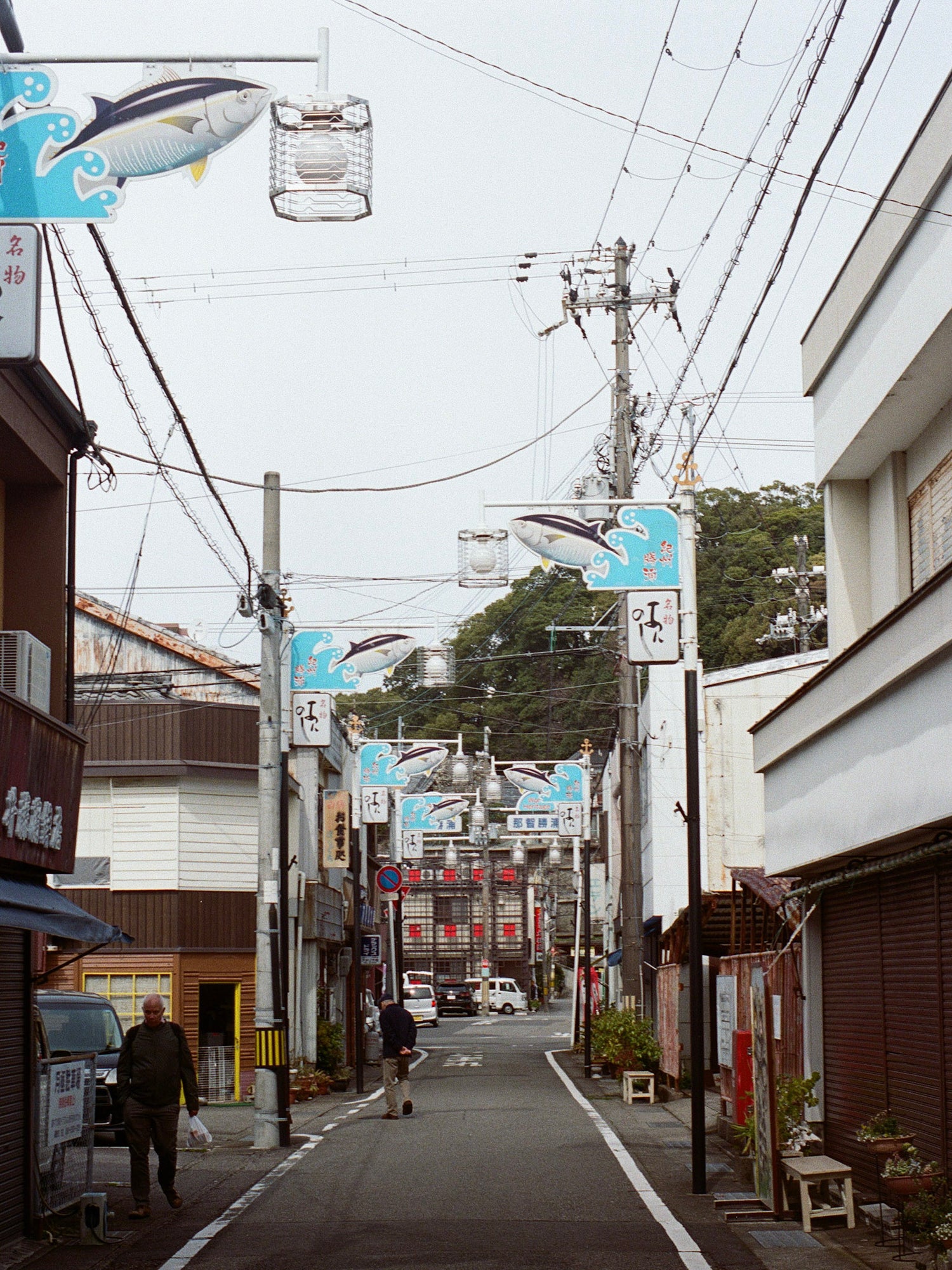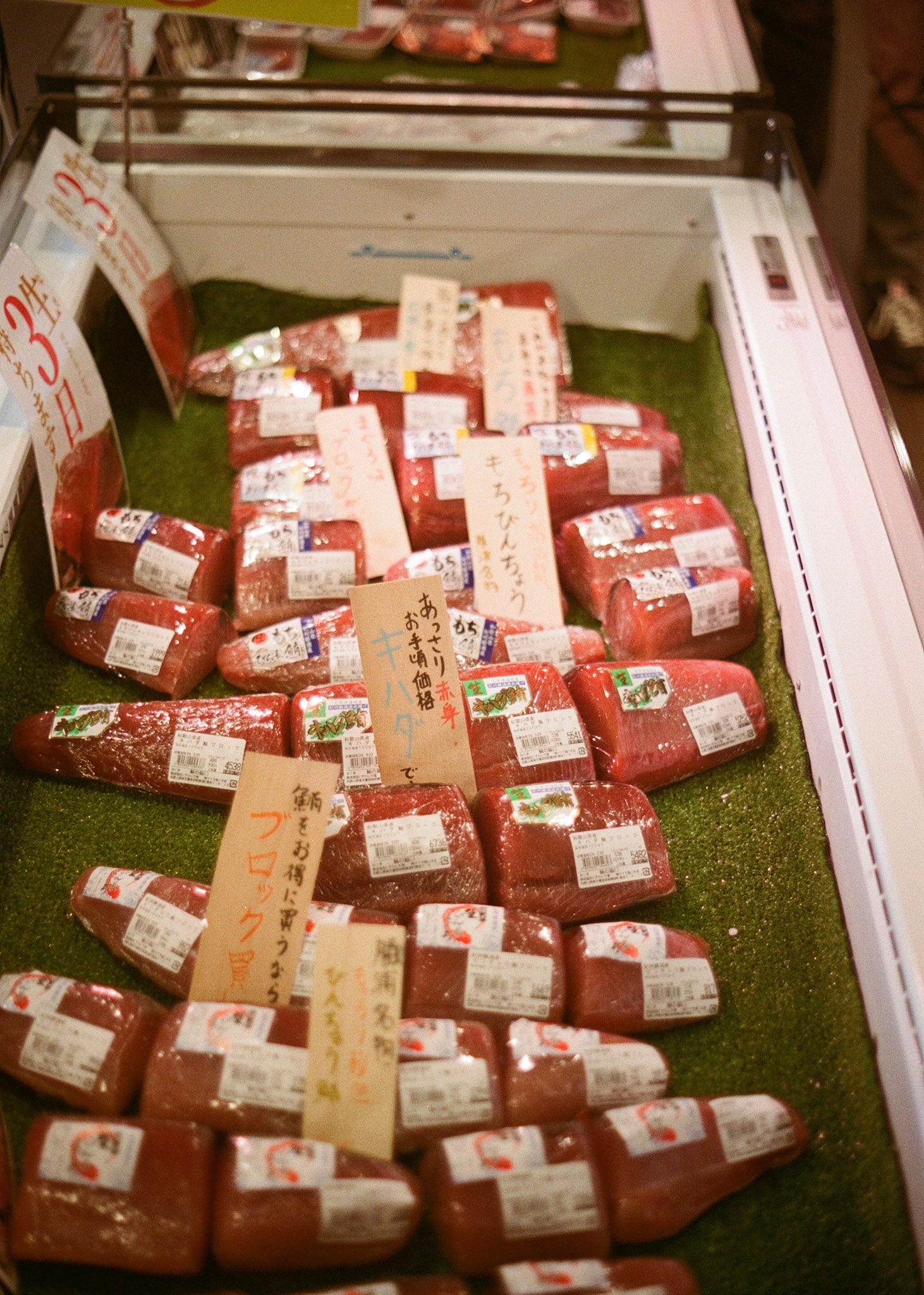One night in a fishing town called Katsuura, in the Wakayama Prefecture of Japan, I got talking to a guy named Shuu over dinner. He was sitting next to me sipping on Shōchū and slurping on ramen. He turned to ask where my girlfriend and I were from. After some elementary Japanese and a bit of fiddling around translating it on my phone, I learned Shuu was a fisherman, more specifically a diesel engineer and mechanic on the local fishing fleet. These jobs may seem poles apart but when you understand how modern commercial tuna fishing is done, they make more sense.
My curiosity got the better of me and the next day, killing time at dawn while I waited for the sun to rise, I rode my bike around the harbour where the tuna boats came in. Before long I found myself at the Katsuura fish market watching tuna being craned off boats, sorted into lines, stickered according to weight and eventually boxed up on ice to be loaded onto trucks by forklifts. The whole experience was mesmerising and horrifying all at the same time.
I found myself wondering, can we really keep taking this many fish from our ocean?
As fate would have it, I didn’t have to wait long for an answer. Right above the fish market was the Katsuura Tuna Museum – ‘museum’ is generous, as it consisted of a single room with a few info boards and old photographs. But it addressed a lot of my questions.
In the past, tuna fisheries in Japan mostly used a traditional fishing method known as Ipponzuri, where poles with individual lines are used to catch tuna one at a time. Pole and line and troll fishing methods such as these are known to have minimal impacts on other vulnerable marine wildlife. But the Japanese also pioneered another method of fishing – believed to date back to the 18th century – that involved what is known today as longlining.
Prior to 1920, fishing vessels were relatively small, relied largely on wind to propel them and lacked refrigeration. This limited longline fishing to short trips of two-to-three days in the coastal waters off Japan. Over time, through advances in technology and driven by increased demand, the tuna longline fishing industry continued to grow, and its range expand.
Fast forward to 2024 and people like Shuu and his crew sail into the open waters of the Pacific to the pelagic zone, where up to 100km of line is laid out with buoys that provide GPS readings. The line takes around four hours to lay out and along its length are up to 3000 branches of line, each with a baited hook, which sit in the water for around 10-12 hours at a time. Longline tuna boats can stay at sea for months, so a bit of simple maths starts to paint a picture of the sheer volume of fish being caught.
We stayed in Katsuura for four days and every day it was filled to the brim with albacore, yellowfin and the very occasional Pacific bluefin (two) during the time we were there. The Pacific bluefin has always been the prize catch here. The annual Japanese New Year tradition means the first fish of the year sold has auspicious qualities attributed to it. On the first day of business at the Tokyo Fish Market for 2024, a 238-kilogram Pacific bluefin was sold for 114.2 million yen (approx. $AU1.2 million).
















